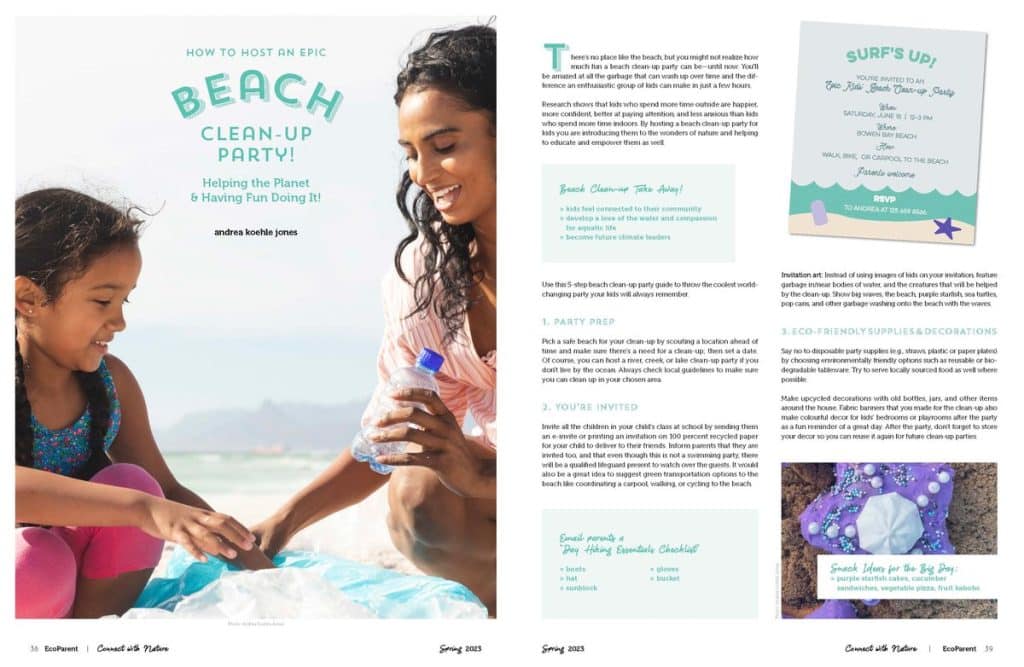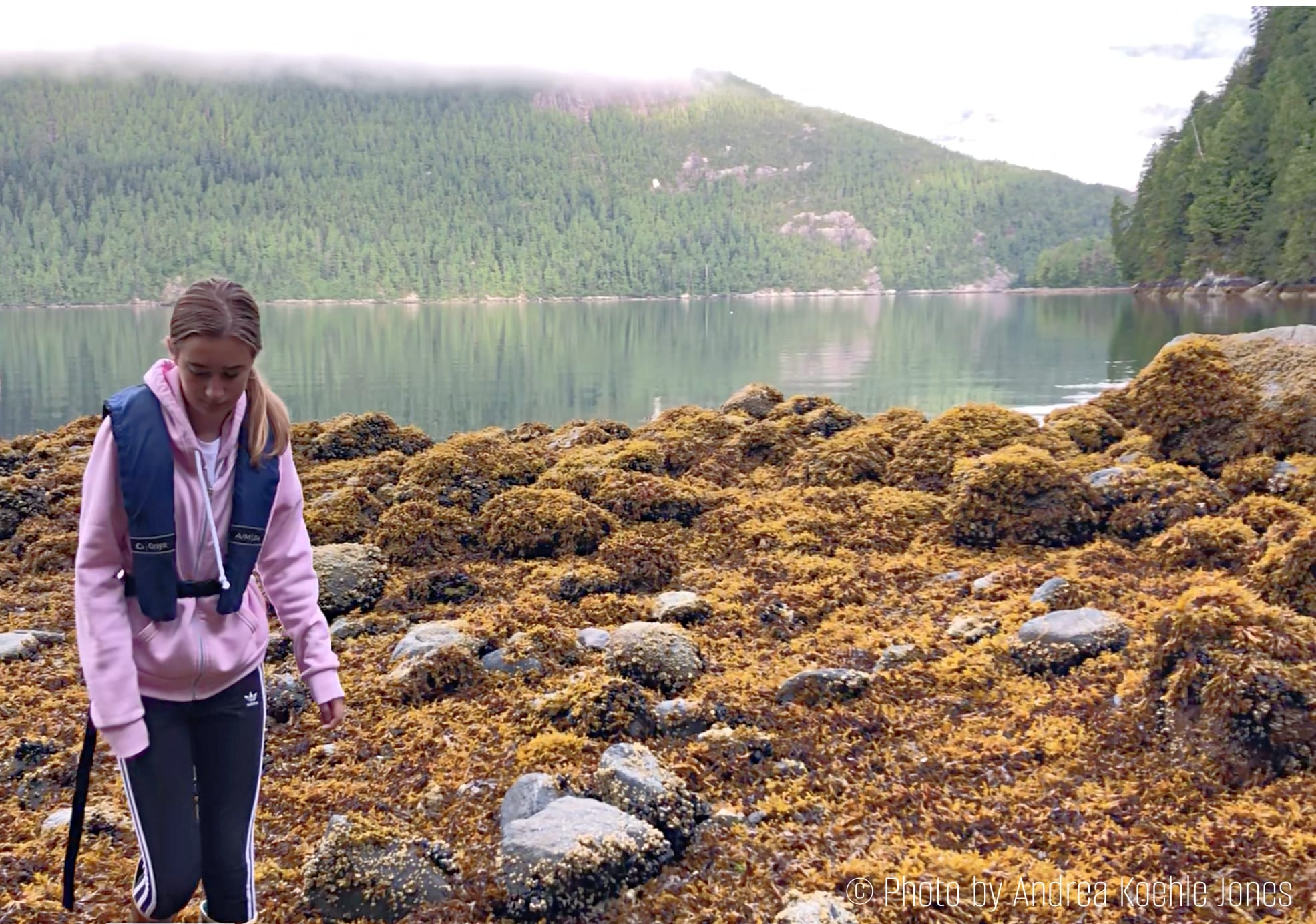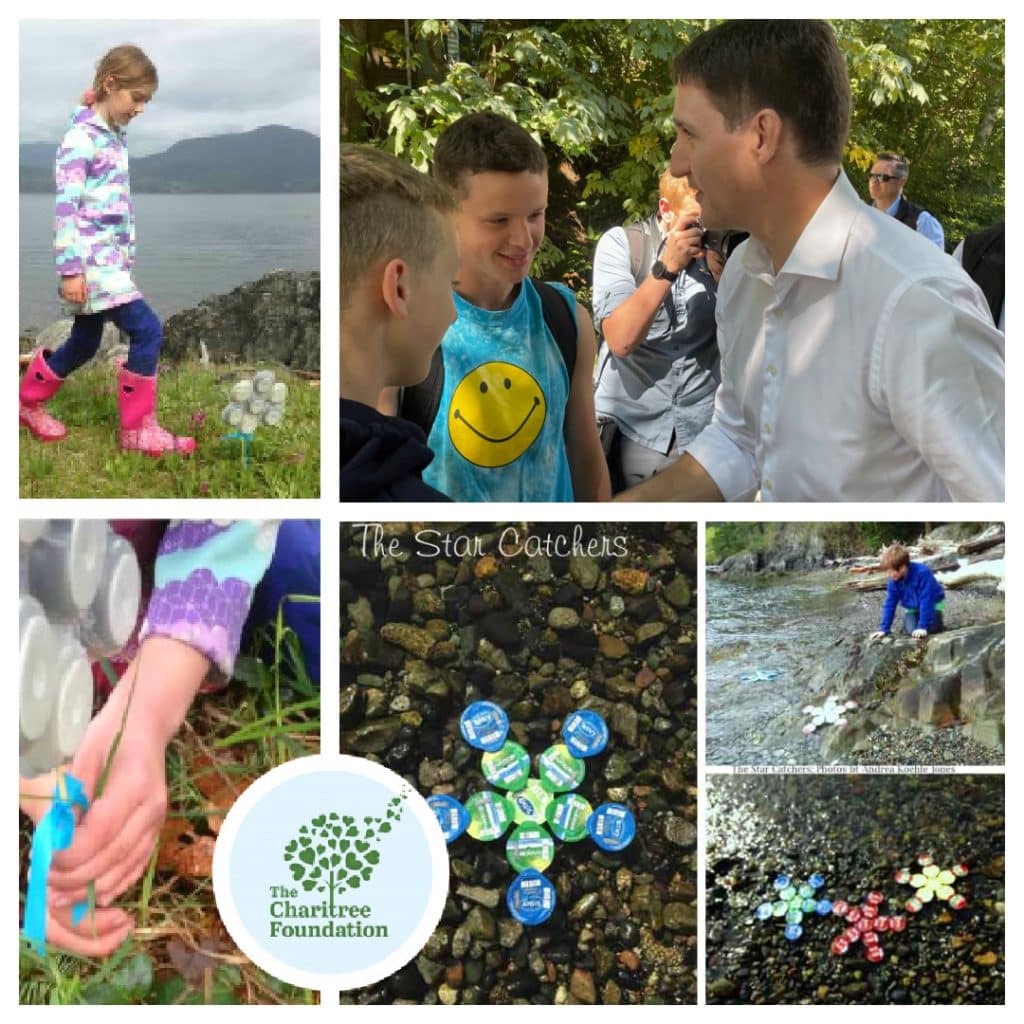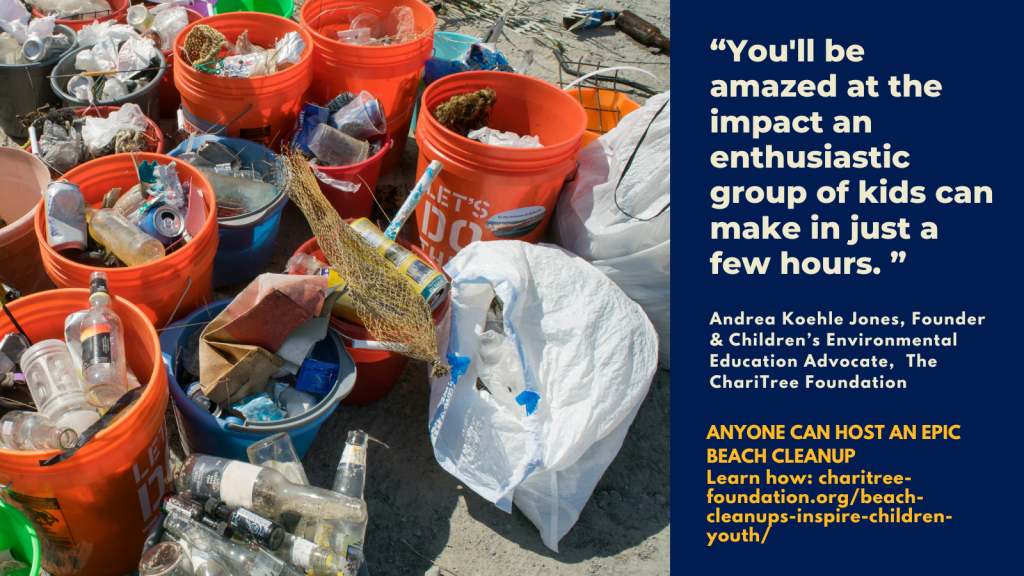Beach Clean-up Take Away for Kids
- encourages children to spend time outdoors to engage in physical activity and reduce stress
- develops a connection and appreciation for their community and nature as well as compassion for aquatic life
- provides a hands-on learning environmental education experience that complements their classroom education. Children learn about the impact of litter on marine life and coastal ecosystems through direct observation, interaction and teamwork
- fosters a sense of hopefulness, empowerment and responsibility for the planet from a young age that inspires future climate leaders

by Andrea Koehle Jones, Founder, The ChariTree Foundation. EcoParent Magazine (March 2023)
Organizing a beach cleanup for kids is a fun environmental education activity to help protect marine ecosystems and keep our beaches clean. Family cleanups are a great weekend or summer activity and here’s a step-by-step guide to organizing a larger one at your local beach by the ocean, lake or river.

- Plan Your Event:
- Decide on a date and time for the cleanup. Consider factors like weather, tides, safety and accessibility.
- Choose a specific location for the cleanup. Research beaches in your area that are in need of cleaning and obtain any necessary permits or permissions.
- Recruit Volunteers:
- Invite friends, family, your school class or community group.
- Provide clear instructions on how volunteers can sign up or get involved.
- Gather Supplies:
- Organize beach cleanup supplies including buckets, trash bags, gloves, litter pickers, and hand sanitizer.
- Safety Prep:
- Prioritize safety by providing safety guidelines and instructions to volunteers before the cleanup.
- Ensure that volunteers wear appropriate clothing, including boots, hats, and sunscreen. Kids can also wear lifejackets.
- Have a lifeguard and first aid kit on hand in case of minor injuries.
- Coordinate Logistics:
- Encourage walking, cycling or carpooling to the cleanup and ask participants to bring their own water recyclable bottles. You can provide beach themed snacks in recyclable containers.
- Communicate a designated meeting place and time and provide clear directions to the cleanup site.
- Consider setting up waste sorting and craft stations to separate recyclables from non-recyclables and provide children opportunities to make crafts from some of their collected debris.
- Environmental Education Elements:
- Incorporate an educational aspect into the cleanup by providing information about the impact of marine debris on the environment.
- Provide educational materials or presentations about ways to reduce plastic consumption and promote sustainability.
- Offer beach cleanup games, scavenger hunts and crafts for kids.
- On the Day of the Cleanup:
- On the day of the cleanup, arrive early to set up and welcome children, parents and volunteers.
- Assign specific areas of the beach to groups of volunteers to ensure thorough coverage.
- Supervise the cleanup and provide guidance and support to children and volunteers as needed.
- Document and Celebrate:
- Take photos and videos throughout the cleanup to document the event and share on social media to raise awareness.
- After the cleanup, gather volunteers for a debriefing session to celebrate accomplishments and discuss ways to continue supporting beach conservation efforts.
- After the Cleanup:
- Follow local regulations to properly dispose of collected waste and recyclables.
- Thank children, parents and volunteers and encourage them to stay involved in future cleanup efforts.
- Make a donation—on behalf of the kids who participated—to an environmental organization that helps clean up oceans and waterways.
FROM LITTLE THINGS, BIG THINGS GROW: Remember, no matter how big or small, every clean-up helps. By organizing a beach cleanup, you’re making a positive impact on the environment and inspiring others to do the same.
For more beach clean-up ideas including beach party invitations, eco-friendly supplies and decorations, beach party snacks and more check out How to Host a Kids’ Beach Clean-up Party: Helping the Planet & Having Fun Doing It!


